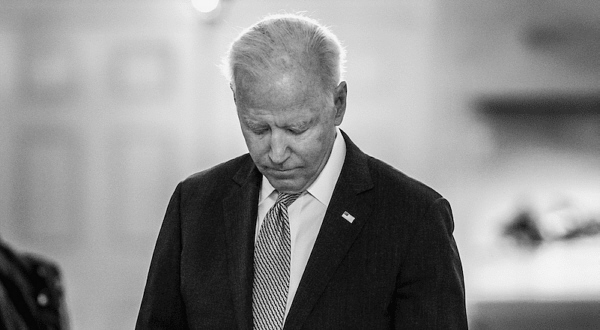

Biden's Executive Order: Backdoor
to 'Gun Control' or Campaign Event?

File photo of US President Joe Biden. Photo Credit: White House
By James Fite. Sept 29, 2024
Article Source
President Joe Biden signed an executive order on Thursday, September 26, to put a stop to 'gun violence' and heal the trauma it has caused in America – a task much easier said than done. The president and his intended successor, Vice President Kamala Harris, said at the signing that it's time for universal background checks, red flag laws, and another ban on so-called assault weapons. But this presidential action does none of that. So, what does it do? Seemingly very little. Will this bring any real result – a reduction in either shootings or shooters' rights, or both – or was it merely a campaign event for Harris and her fellow Democrats?
Rights, Restrictions, and the Executive Order
"It's a false choice to suggest you are either in favor of the Second Amendment, or you want to take everyone's guns away," Harris said during the signing. "I am in favor of the Second Amendment and I believe we need to reinstate the assault weapons ban."
"It's time we establish universal background checks and require safe storage of firearms," Biden said. "Start holding parents accountable for being negligent."
Few would argue that the vice president and Oval Office hopeful was wrong when she said folks have the right to "live, work, worship and learn without fear of violence – including gun violence." However, the strict gun control measures Harris and Biden call for are precisely the sort of thing the Second Amendment was designed to prevent.
Luckily for those who believe in the "shall not be infringed" part of the right to keep and bear arms, this executive order accomplishes none of that. It can't; such actions only bind those who work in the executive branch of the federal government.
Task Forces, Studies, and Students
The executive order establishes a task force among federal agencies under the president's authority to assess the risks of machine-gun conversion devices and so-called "ghost guns," provide a strategy to stop the proliferation of both, and find a way to make active-shooter drills at schools less traumatizing to the students. Directly, this executive order simply tasks federal employees with studying the listed problems and reporting back to the president within 90 days.
Indirectly, however, there is plenty of potential for big changes. Remember the ATF's pistol brace rule change in 2023? It threatened to turn potentially millions of law-abiding Americans into felons if they failed to surrender their legally acquired firearm accessories within 120 days. A federal judge held the rule void in June 2024, but the fight is far from over. Biden's last gun control executive order could redefine who's classified as a firearms dealer, potentially working as a sort of backdoor to universal background checks. But time will tell.
This executive order targets conversion devices that allow semi-automatic weapons to be fired automatically – or to simulate automatic fire – and the technology required to 3D print guns at home. Could this eventually result in a new "clarification" from the ATF that further restricts the rights of armed Americans? Certainly – though that's far from a guarantee. It's also entirely possible this latest presidential action is little more than a campaign event for Kamala Harris in the wake of a tragedy. Four people were killed and 17 others injured after a multiple-gunman shooting in Birmingham, Alabama, on Saturday, September 21.
In any case, the reports aren't due until shortly before Biden leaves office – which, of course, will likely only result in executive branch actions against American gun owners if Harris wins in November. As such, this could be all show and no substance – much ado about nothing, if you will. Still, for anti-gun progressives, it sure does make a good campaign event.
(Source: This article was published by Liberty Nation)
![]()
























